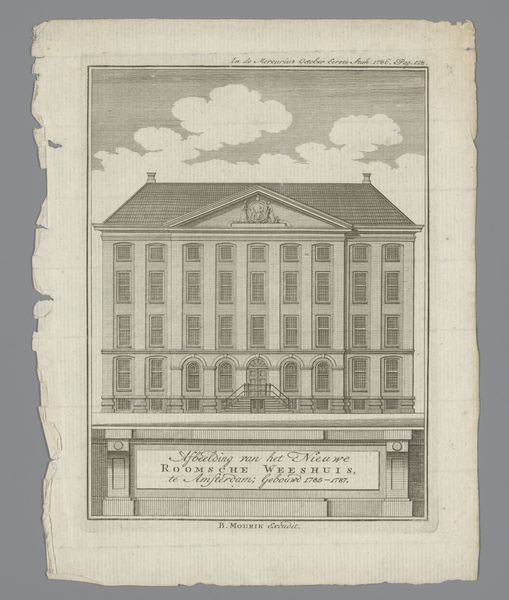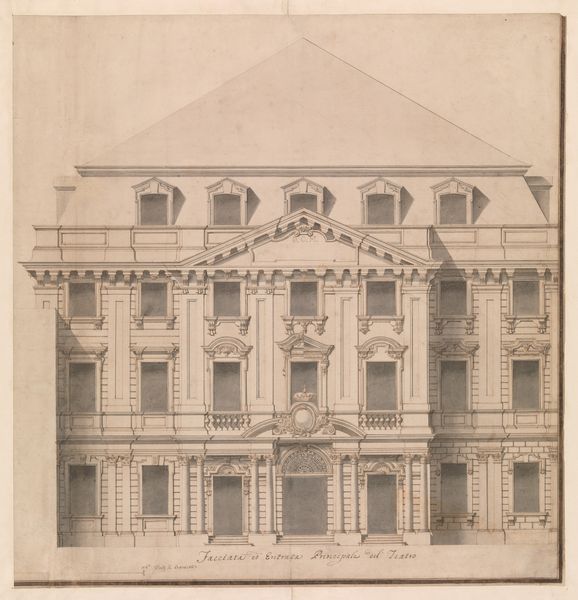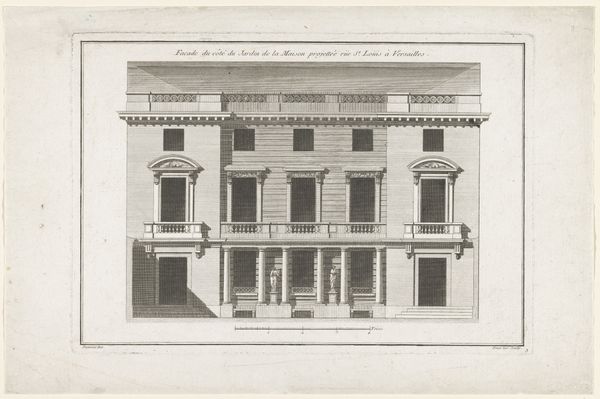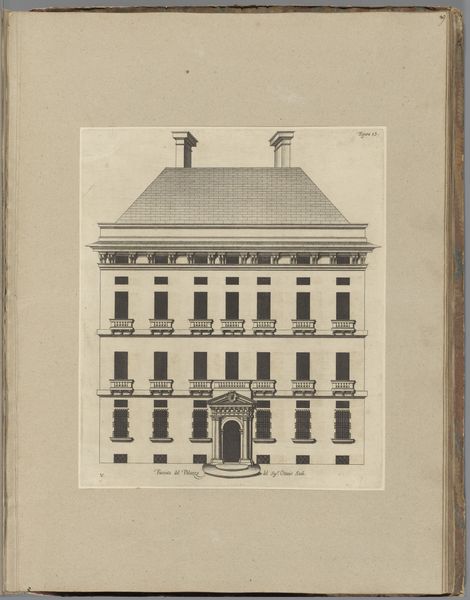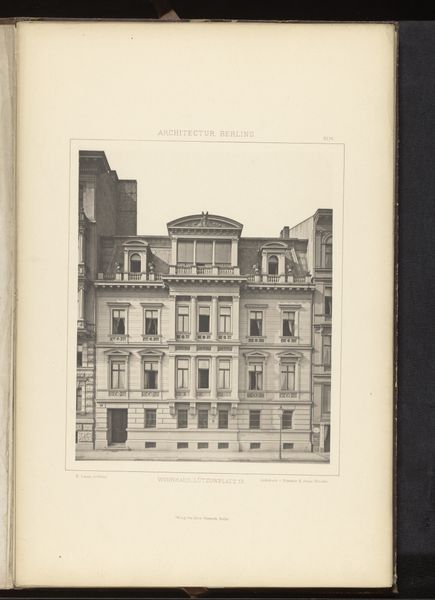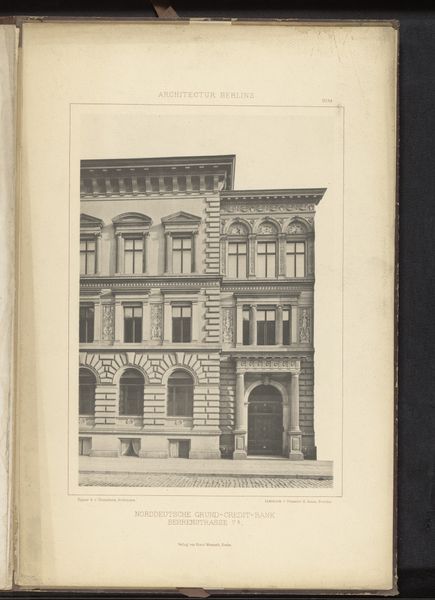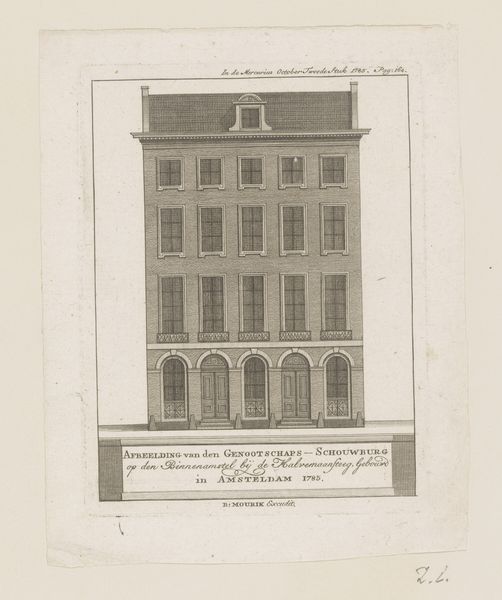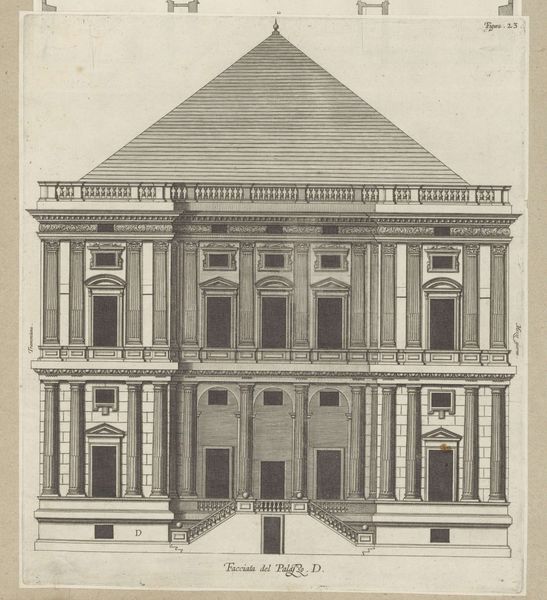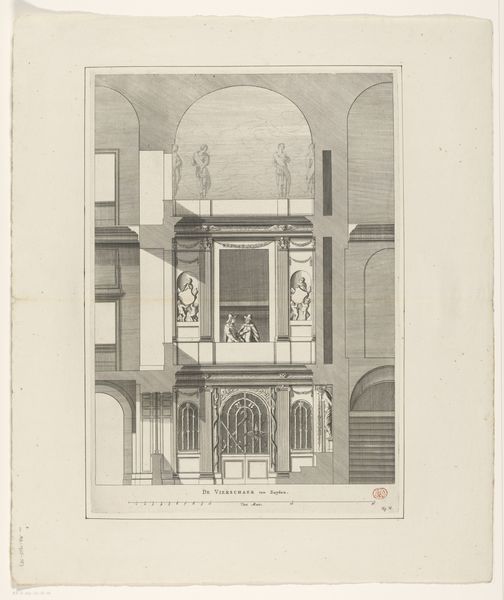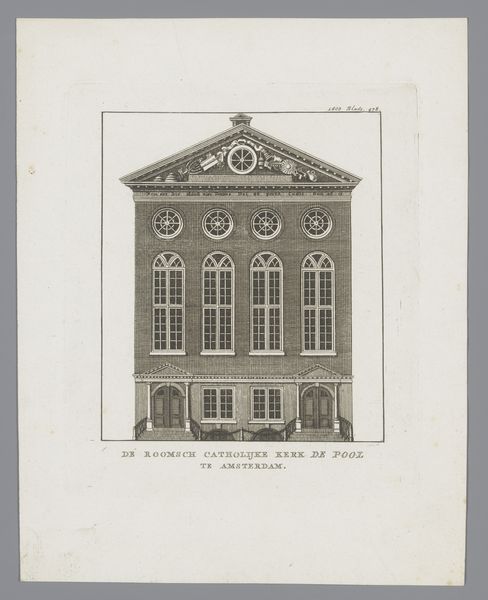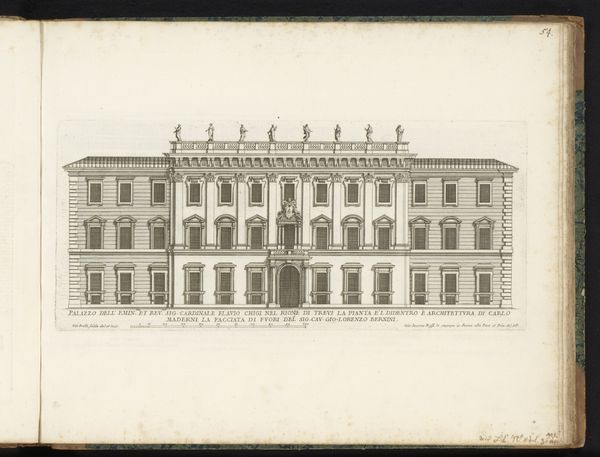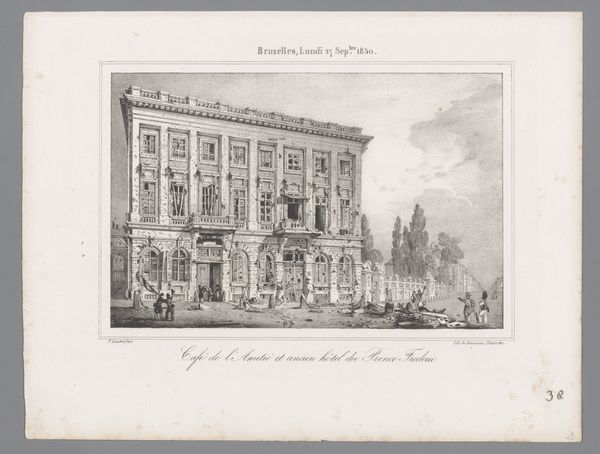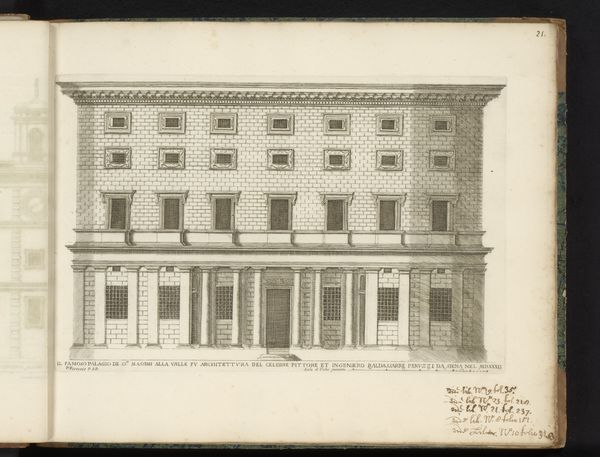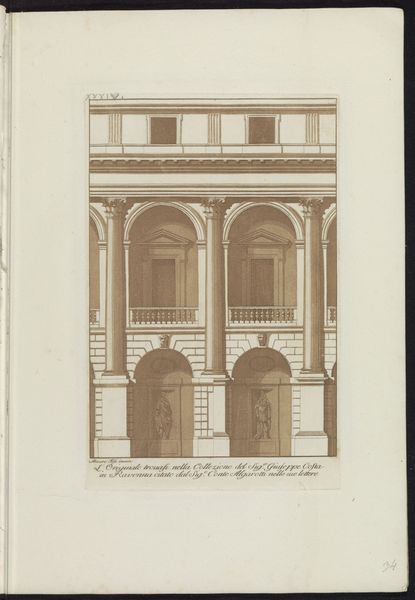
drawing, etching, paper, engraving, architecture
#
drawing
#
neoclacissism
#
etching
#
paper
#
cityscape
#
engraving
#
architecture
#
building
Dimensions: height 405 mm, width 300 mm
Copyright: Rijks Museum: Open Domain
This is Noach van der Meer II's rendering of the Felix Meritis building in Amsterdam. Note the triangular pediment supported by classical columns. This architectural motif, echoing ancient Greek temples, was meant to evoke rationality, order, and enlightenment values. Above the entrance, the name 'Felix Meritis', meaning 'fortunate merit' or 'successful through merit', encapsulates the aspirations of the society that met within its walls. These elements are not unique to this building but resonate with a larger cultural and historical narrative. We see similar architectural gestures across Europe and the Americas during the Enlightenment period. This pediment is related to earlier forms of royal display in which the gods, goddesses, and royalty all appear in the same architectural structure, which acts as a theatrical stage that reinforces the legitimacy of their power. This motif also reflects the desire to link contemporary intellectual endeavors with the wisdom and cultural achievements of the ancient world. The careful symmetry and measured proportions exude balance and harmony, which speaks to the Enlightenment's pursuit of reason, knowledge, and progress. These elements of cultural memory resurface time and again, continually re-imagined to carry new layers of meaning and aspiration.
Comments
No comments
Be the first to comment and join the conversation on the ultimate creative platform.
